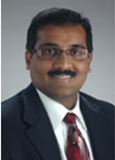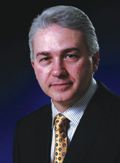The current issue of JAFIB has a wide variety of interesting original research, featured reviews and case reports covering various aspects of AF. AF in patients with heart failure signals poor prognosis. The endo¬thelial nitric oxide synthase (eNOS) enzyme is a key player in the counterregulation of oxidative stress, which is related in part to AF pathogenesis. In their original paper Amir and Fares investigated a possible clinical association in heart failure patients between the presence of exon 7 G894T eNOS polymorphism, known to result in the Glu298Asp protein variant, and the occurrence of AF. Patients with systolic heart failure demonstrate strong correlation between AF and the presence of a G allele in the exon 7 G894T eNOS genotype. These findings support the importance of eNOS polymorphism in the pathogenesis of AF in heart failure patients.
In this issue Sattiraju et al from the University of Minnesota tried to solve the conflict of which operative technique affects the risk of atrial tachyarrhythmia after or¬thotopic heart transplantation (OHT). They sought to determine whether OHT by bicaval (BC) technique is associated with a lower risk of atrial tachyarrhythmia than biatrial (BA) technique. After a median follow up of 4.9 years of 260 consecutive OHT recipients (BA, 155; BC, 105) 59 patients (22.7%) developed early atrial tachyarrhythmias only graft rejection was found to be a significant predictor of late atrial tachyar¬rhythmias and the technique did not seem to matter.
With the holiday season on us there is one question we all are asked by our patients. “Can I have some alcohol during the holiday festivities? Is that going to increase the risk of AF?” Even though, there is resounding evidence that excessive alcohol consumption can result in acute atrial arrhythmias, what is not known is the link between minimal to moderate consumption to the long term risk. More recently, a significant relationship has been consistently observed between elevated consumption of alcoholic beverages on a regular basis and an increased risk of developing AF. In a nicely written featured review Andreas Zimmerman and David Conen from the University Hospital of Switzerland clarify that the amount of alcohol needed to confer an increased risk of AF is rather elevated, approxi¬mately two alcoholic beverages per day in women and four to five alcoholic beverages per day in men, suggesting that on a population level, alcohol is not a major contributor to the global AF epidemic.
Current evidence suggests that diastolic dysfunction, which is associated with atrial volume and pressure overload, may be a mechanism underlying the perpetuating cycle of AF recurrence following successful electrical cardioversion. Diastolic dysfunction is considered to be a defect in the ability of the myofibrils, which have shortened against a load in systole to eject blood into the high-pressure aorta, to rapidly or completely return to their resting length. Consequently, LV filling is impaired and the non-compliant left ventricle is unable to fill at low pressures. As a result, left atrial and pulmonary vein pressure rises, and electrical and structural remodeling of the atrial myo¬cardium ensues, creating a vulnerable substrate for AF. In his review article, Rowlens Melduni from the Mayo Clinic reviewed the current evidence highlighting the association of LV diastolic dysfunction with AF recurrence after successful electrical cardioversion and provide an approach to the management of LV diastolic dysfunction to prevent AF recurrence.
Matt Reynolds and group from the BI-Harvard Medical School contributed a very nice article on the interlinked epidemics of Atrial fibrillation and obesity that impair quality of life. As the prevalence of both conditions in the US continues to rise, so will the number of obese patients with atrial fibrillation referred for catheter ablation. In their paper they reviewed what is known about the effects of atrial fibrillation and obesity on quality of life and how quality of life is affected by catheter ablation for atrial fibrillation in obese patients.
Savina Nodari from the University of Brescia explored the current understanding of the antiarrhythmic effects attributed to n-3 PUFAs including direct modulation of ionic channels, improvement of membrane fluidity, anti-inflammatory and antifibrotic effects, and modulation of sympatho-vagal balance. There was a special focus on the results of epidemiologic studies exploring the associations between nutritional intake of n3 PUFAs and the incidence of AF. This paper reviewed the findings of the clinical trials investigating the effects of n-3 PUFAs supplementation in the prophylaxis of AF and in the prevention of its recurrences in a comprehensive fashion.
Respiration influences the sinus heart rate, however, little is still known about the tachyarrhythmias related to respiration. Atrial tachycardia (AT) rarely emerges during inspiration and it also ceases during expiration. This type of AT is thus called respiratory cycle-dependent atrial tachycardia (RCAT), and it demonstrates a centrifugal activation pattern. Based on these peculiar P wave morphologies, the foci con¬verged either around the right superior pulmonary vein (RSPV) or inside the superior vena cava where the anterior right ganglionated plexi (ARGP) is considered to be located. The mechanism of such AT is therefore thought to be related to the activity of the autonomic system. In this elegant review Yamomoto and Murata from Nippon Medical School, Tokyo described the science behind their observations and several others.
JAFIB also congratulates the Global Atrial Fibrillation Alliance (GAFA) Foundation for their efforts in improving the awareness of AF world wide. Every second Saturday of the month of September has been designated as the World AF Awareness Day. In 2012, September 8th was observed as the first World AF awareness Day. There was a 5K Run and Yoga organized in Kansas City and Glendale in the United States. 2013 seems to be more exciting as more cities around the world seem to be getting ready for this event.
JAFIB is proud to endorse and co-sponsor the first International Symposium on Left Atrial Appendage (ISLAA 2013) to be held in Kansas City, MO on March 1-2, 2103. Internationally reknowned Interventional cardiology experts Drs. David Holmes Jr and Saibal Kar will co-direct this fantastic educational activity along with us. The purpose of this symposium is to update medical practitioners on the future of Left Atrial Appendage (LAA) Procedures. Participants will learn about various research studies regarding Left Atrial Appendage exclusion that includes both occlusion and ligation types of devices and gain a better understanding of the role that the LAA plays in atrial arrhythmias. An evolution of percutaneous techniques in LAA occlusion or exclusion will be discussed. An overview of the role of cardiac imaging in Left Atrial Appendage exclusion will be reviewed. A variety of topics will provide specialists and generalists an update on the evolution of left atrial appendage exclusion strategies and patient care. Full details of the symposium can be downloaded at www.islaa-kc.com.
With this we want to say good bye to 2012. We wish you all Happy Holidays and welcome a prosperous and Joyful New Year.
Warm regards
Dhanunjaya Lakkireddy
MD, FACC, FHRS
Associate Editor
JAFIB
Andrea Natale
MD, FACC, FHRS, FESC
Editor-in-Chief
JAFIB

